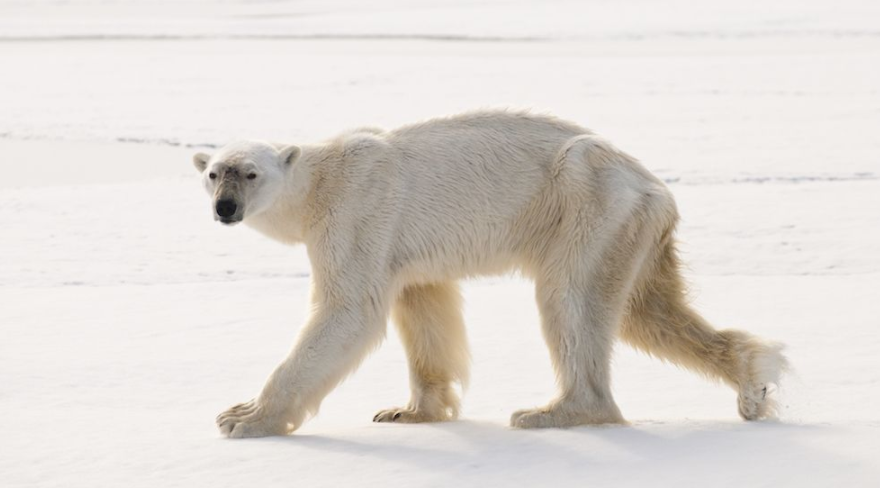With the prognostication that polar bears are doomed to go the way of the dodo by 2100, one can’t help but think of paleoclimatologist Jack Hall (Dennis Quaid) in The Day After Tomorrow. Positing his own timeline for when global warming (that’s what it was called back when the movie came out in 2004 before Dick Cheney changed it to the more pleasant-sounding, less fear-inducing “climate change”) would cause drastic havoc on the earth’s inhabitability, his prediction was all at once proven correct and then some. All thanks to the intense acceleration of his prophecy when, while conducting business as usual in Antarctica for the National Oceanic and Atmospheric Administration, a massive chunk of the Larsen Ice Shelf breaks off (on a side note, the shelf once spanned 33,000 square miles but has since become 26,000). This sets off a chain reaction in the Atlantic Ocean, in turn creating a superstorm system that hovers above the Northern Hemisphere, causing below freezing temperatures that no human can withstand in the eye of the storm. In short, the world is cleansing itself with a new Ice Age.
While co-writers Roland Emmerich and Jeffrey Nachmanoff’s narrative came across as just another way to cash in on a blockbuster proffering the doomsday potential of plenty of destruction and explosions (complete with a tornado in Los Angeles), it feels as though the core of the narrative is coming more and more to fruition, even including the balking Vice President telling Hall, “Our economy is every bit as fragile as the environment. Perhaps you should keep that in mind before making sensationalist claims.” So yes, just as in the movies, so it is that in real life the accursed economy must drive every life-denying move (but so long as it is not the lives of the rich, who cares?). Polar bears, deemed frequently as the “poster children” for climate change and its realness (because yes, somehow there are still those who would shrug it off as more “the sky is falling” fodder for news outlets), have been forced to face the increasingly “sensationally” bleak results of the unremitting effects of fossil fuel emissions.
Some might take comfort in the “recovery” of the oft-discussed hole in the ozone layer thanks to 1987’s Montreal Protocol, but mending the damage won’t do much good if humans still can’t find a way to start implementing use of natural energy that does not rely on the use of greenhouse gas emissions like fossil fuels. Yet despite all the talk and all the seeming enthusiasm to move toward renewable energy, it still accounts for only four percent of the world’s primary usage. This, obviously, means that the greenhouse effect will continue to have damaging ramifications on ice sheets melting in the Arctic.
These sheets, of course, are the polar bears’ primary means of hunting for the staple of their diet, seals. To get to these seals, polar bears are dependent upon robust blocks of ice they can sit and lounge on until a seal comes along (swimming longer and longer distances when necessary to find a sheet), capable of waiting like a tick by storing fat reserves when starvation mode kicks in. Unfortunately, this is a mode that is likely to kick in much more frequently in the coming decades (we’ve all already seen the shocking and upsetting images of emaciated “white bears”) as the drastic measures required to reverse climate change are not being made with any sense of true urgency.
As it stands, even if the necessary alterations were made right this instant, large portions of the already scant polar bear population will still suffer extinction. The estimation of 2100 being the year of their demise already seems like trop généreux a guess. As though to soothe the few who give enough of a shit about the animal kingdom and the humans’ ceaseless tampering with it. A “tampering,” to use understatement, that has prompted sea ice that lasts for any more than a year to diminish by a rate of thirteen percent per decade. While polar bears have a certain amount of flexibility to their diet, a mother and her cub have more stringent nutritional needs which threaten the very circle of polar bear life without ice to stand on.
And yet, perhaps if the Jack Hall prediction of The Day After Tomorrow comes to roost in our lifetime–though everyone is insistent “it could never”–polar bears can post up in the Northern Hemisphere, though certainly not New York City–it’s just too played, even for polars.




















